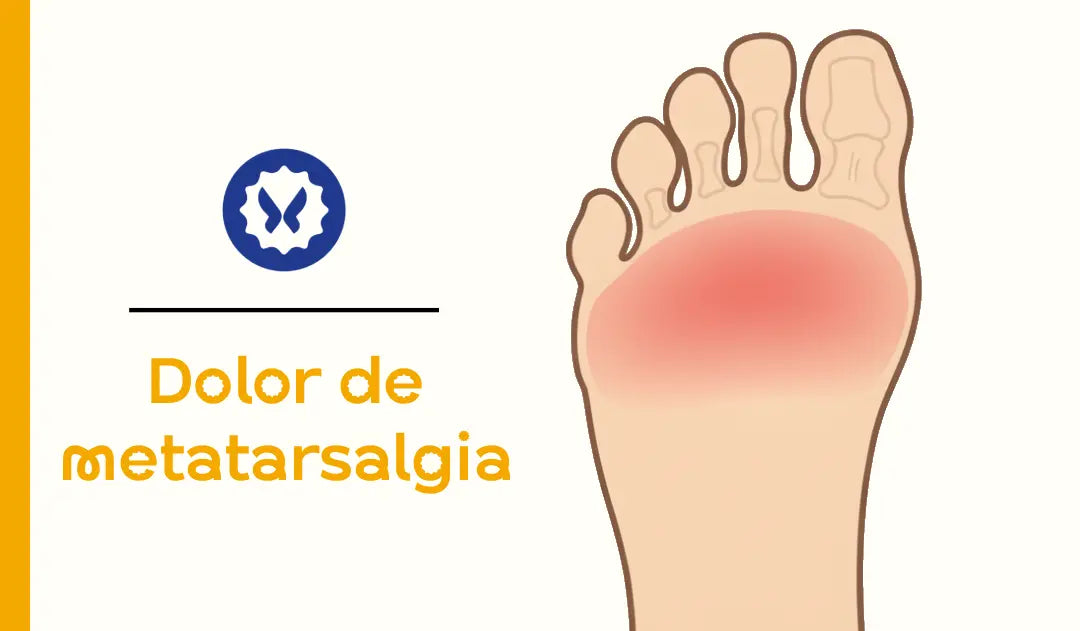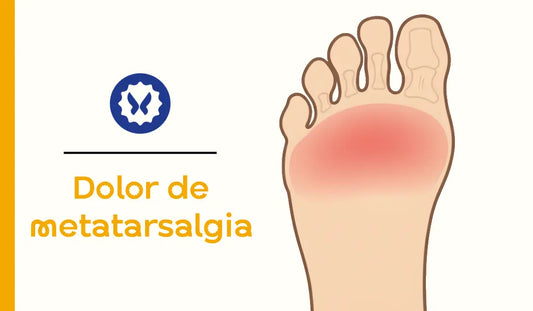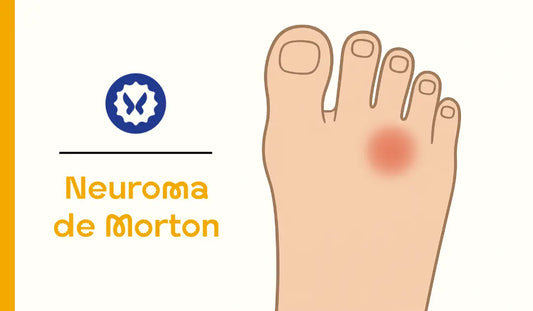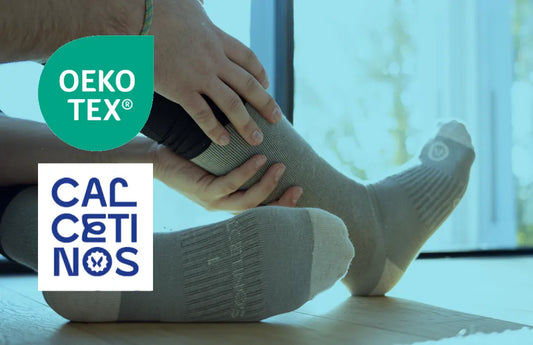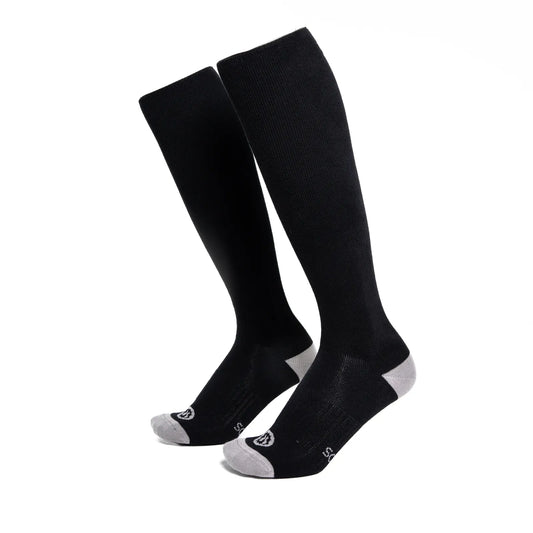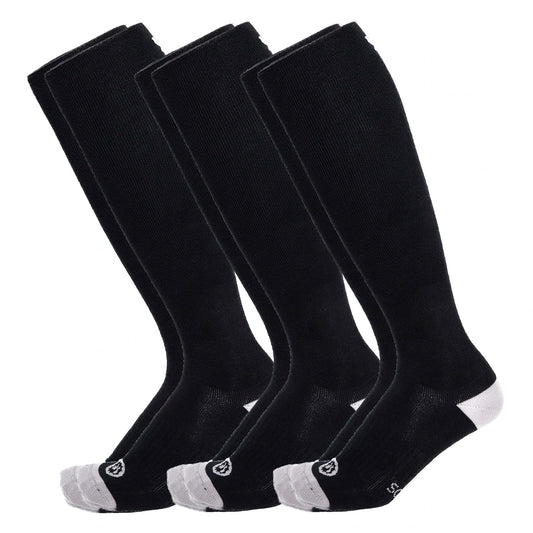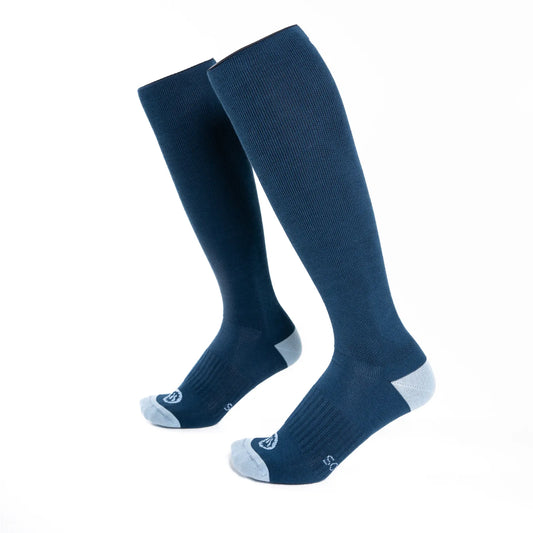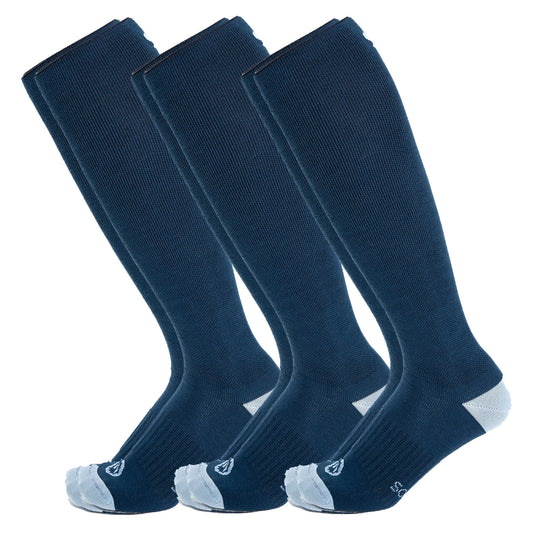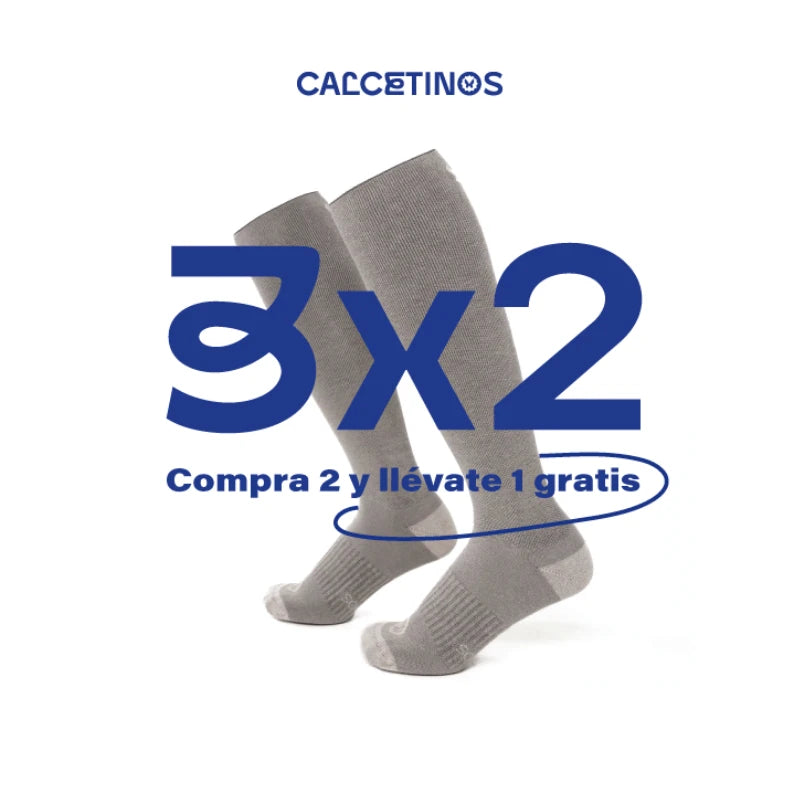What is metatarsalgia?
Metatarsalgia is pain in the front of the foot— the ball of the foot , or "pad" under the toes—usually caused by overuse of the metatarsal bones and surrounding tissues. It's not usually serious, but it can be very uncomfortable when walking or running. It usually improves with simple measures: rest , ice , changing shoes , wearing appropriate socks , and supports that redistribute pressure . [1]
Symptoms and when to consult
Common symptoms
- Stabbing, burning, or stabbing pain under one or more metatarsals.
- It worsens when standing or when lifting the foot while walking; it improves with rest .
- It may coexist with calluses under the metatarsal heads and a sensation of “walking on a stone.” [2]
Consult a professional if: pain prevents normal activity, does not improve in ~2 weeks with self-care, worsens , there is tingling/loss of sensation , or you have diabetes (foot care is a priority). [3]

Causes and risk factors
Metatarsalgia is multifactorial. The most common causes are mechanical overload due to technique/volume of activity, narrow or high-heeled footwear , support disorders (bunions, claw toes, cavus/valgus feet), and changes in weight or training surface . [4]
Circulation and forefoot pain: the “end of the day” effect
When circulation slows , your legs become strained and experience that subtle swelling we all notice at the end of the day or on long trips. The result? With each step, you land heavier, and your forefoot (the area under your toes) protests more quickly.
What works in practice
- Move around in small chunks: take short active breaks to unblock your legs.
- Elevate your legs for a few minutes when you can.
- Take care of your shoes: wide toe box and good cushioning to distribute pressure.
- Help yourself with compression (used correctly): Our 14–17 mmHg compression stockings work where they need to— the leg —to promote venous return , without compressing the foot . This reduces fatigue and helps the forefoot better endure the day.

Sock Options According to Your Day
- Socks (all models): wide toe box and zero pressure on the forefoot and toes.
- Dynamic model socks : if you are looking for extra comfort , their cushioned sole is your ally for walking and standing for many hours.
- Leg warmers (without foot) : ideal when the forefoot is sensitive and you don't want to cover it, but still enjoy the benefits of leg compression.
Note: Compression doesn't "cure" metatarsalgia, but it does improve circulation and a feeling of lightness in the leg , which helps reduce the strain on the forefoot throughout the day. If the pain doesn't improve, consult a professional.
(Clinical sources for conservative self-care and supports/ metatarsal pads ). [5]
Metatarsalgia vs. Morton's Neuroma (and other confusions)
Metatarsalgia is an umbrella term for forefoot pain caused by overuse. Morton's neuroma is another condition: thickening/irritation of a digital nerve, typically between the 3rd and 4th toes , with burning pain, a "stone in the shoe" sensation, and sometimes tingling . These may coexist or be confused with each other. [6]
Historically, it has even been called " Morton's metatarsalgia ," which explains some of the confusion. Differentiating it from MTP capsulitis, plantar plate, or bursitis is a clinical task; therefore, if it persists, a professional evaluation is recommended. Take advantage and read our article on Morton's neuroma . [7]
Conservative treatment and self-care
1) Your shoe, your ally
Look for a wide toe box (so your toes can move freely), good cushioning , and a shock-absorbing sole. Avoid high heels and lasts that squeeze your toes. If your feet feel squashed at the end of the day, that shoe isn't helping.
2) Unload the forefoot ( metatarsal pads / insoles)
Metatarsal pads and some insoles distribute pressure better. A basic tip: place them slightly behind the painful area, not directly on top . Start with drugstore options, and if you can't find the right spot, ask a podiatrist for an adjustment.
3) Ice and “slowing down” in outbreak
On bad days, apply ice for 10–15 minutes, two–three times a day , and reduce impact (walk for shorter periods of time, alternate surfaces). It's relative rest : move, yes, but don't force yourself.
4) Pamper the mechanics of the foot
A little mobility and strength makes all the difference:
- Move fingers (open/close, 30–60 s).
- Crumple a towel with your fingers (2–3 sets).
- Stretch calves/soleus (2×30–40 s per leg).
All without sharp pain ; if there is any, you reduce range or stop.
5) When to ask for help
If you don't notice improvement in 2–3 weeks , if the pain worsens , tingling develops, or if you have medical conditions that require foot monitoring, consult a podiatrist or physical therapist. They can adjust supports, recommend orthotics, and, if necessary, refer you to other options.
Note: Socks: This is a general guideline and does not replace a clinical consultation. The idea is to help you move better and with less discomfort in your forefoot , taking care of what depends on you every day.
How compression stockings help without compressing the foot (14-17 mmHg socks)
Graduated leg compression improves venous return and helps control swelling and fatigue . This does not “cure” metatarsalgia, but it does improve walking tolerance and overall comfort, especially during long shifts or travel. Evidence supports benefits for edema and venous hemodynamics for light compressions such as 15–20 mmHg (equivalent to our 14–17 mmHg). [14]
The key to socks is that they don't put pressure on the foot (neither the forefoot nor the toes) and they all have a wide toe box . This means they don't aggravate pain due to compression in the forefoot (something that can occur with tight socks or shoes).
Dynamic: extra comfort thanks to padded sole
For those looking for additional cushioning for their daily walks, the Dynamic model features a fully cushioned sole without squeezing the forefoot.
Dynamic Socks
14-17 mmHg graduated compression focused on the leg, with no pressure on the foot . Wide toe box and fully cushioned sole for extra comfort during long days.
Buy DynamicCompression leg sleeves (footless)
For flare-ups where you want zero contact with the forefoot and toes, you can use our leg sleeves : same 14-17 mmHg graduated compression on the leg only , maintaining the circulatory benefits without covering the foot (perfect with sandals/toe-spacers or when using specific insoles/pads).
Tip : Combine them with wide-toe shoes and met pads ( metatarsal pads ) correctly positioned to unload the forefoot. [15]
Specific problems that Calcetinos could solve
- My legs get sore and at the end of the day the forefoot gets worse.
Light leg compression improves venous return and reduces swelling/fatigue, helping to better support walking and standing. [16]
- The socks squeeze my toes and it hurts more.
Socks don't compress the foot and offer a wide toe box, preventing bunching that increases pressure on the metatarsals. (Wide shoes/lasts and metatarsal pads also help.) [17]
- I need extra cushioning without compromising the forefoot.
Dynamic: cushioned sole + no pressure on the foot = comfort in support and prolonged walking.
- My forefoot is sore today; I don't want anything touching it.
Sock Leg Sleeves: Compression only on the leg with zero contact on the forefoot and toes.
- I travel a lot by plane or spend hours sitting/standing.
Light compression (14-17 mmHg) helps with edema and circulation during travel or long days. [18]
Also, if you've been told your pain may be related to a Morton's Neuroma, remember that narrow lasts and pressure between the metatarsals can aggravate symptoms; read more about socks for Morton's Neuroma here [19]
Frequently Asked Questions (FAQ)
- Does metatarsalgia heal on its own? It usually improves with conservative management: proper footwear, metatarsal pads, weight adjustments, and exercises. If it doesn't improve, consult for an individualized plan. [20]
- Do I need a custom insole? Not always. Many people improve with properly fitted met pads or prefabricated insoles; others require customization after a podiatric evaluation. [21]
- Do compression stockings relieve forefoot pain? They don't treat the forefoot directly, but the compression on the leg helps with circulation and edema, which improves standing/walking tolerance. Wear them with wide-toe shoes and met pads. [22]
- How do I differentiate metatarsalgia from a Morton's neuroma? A neuroma usually causes pain between the third and fourth toes, burning, and sometimes tingling; metatarsalgia may be more diffuse in the forefoot due to overuse. Read our post on Morton's neuroma for details. [23]
- When should I see a doctor? If the pain doesn't improve after 2 weeks, worsens, tingles, or if you have diabetes. [24]
Disclaimer : This guide is for informational purposes only and does not replace the advice of a healthcare professional.
References
- [1] https://www.mayoclinic.org/diseases-conditions/metatarsalgia/symptoms-causes/syc-20354790
- [2] https://my.clevelandclinic.org/health/diseases/15890-metatarsalgia
- [3] https://www.nhs.uk/symptoms/foot-pain/pain-in-the-ball-of-the-foot/
- [4] https://nhsforthvalley.com/health-services/az-of-services/podiatry/musculoskeletal-podiatry/metatarsalgia/
- [5] https://www.mayoclinic.org/diseases-conditions/metatarsalgia/diagnosis-treatment/drc-20354795
- [6] https://www.mayoclinic.org/diseases-conditions/mortons-neuroma/symptoms-causes/syc-20351935
- [7] https://en.wikipedia.org/wiki/Morton%27s_neuroma
- [8] https://nhsforthvalley.com/health-services/az-of-services/podiatry/musculoskeletal-podiatry/metatarsalgia/
- [9] https://www.mskdorset.nhs.uk/foot-pain/foot-pain-metatarsalgia/
- [10] https://www.mayoclinic.org/diseases-conditions/metatarsalgia/diagnosis-treatment/drc-20354795
- [11] https://orthoinfo.aaos.org/globalassets/pdfs/2017-rehab_foot-and-ankle.pdf
- [12] https://www.esht.nhs.uk/wp-content/uploads/2020/05/0797.pdf
- [13]https://pmc.ncbi.nlm.nih.gov/articles/PMC3110403/
- [14]https://pmc.ncbi.nlm.nih.gov/articles/PMC4081237/
- [15] https://www.mskdorset.nhs.uk/foot-pain/foot-pain-metatarsalgia/
- [16] https://www.health.harvard.edu/blog/compression-stockings-a-foot-dr-explains-201502267742
- [17] https://nhsforthvalley.com/health-services/az-of-services/podiatry/musculoskeletal-podiatry/metatarsalgia/
- [18] https://www.health.harvard.edu/blog/compression-stockings-a-foot-dr-explains-201502267742
- [19] https://www.mayoclinic.org/diseases-conditions/mortons-neuroma/symptoms-causes/syc-20351935
- [20] https://www.mayoclinic.org/diseases-conditions/metatarsalgia/diagnosis-treatment/drc-20354795
- [21] https://www.musculoskeletal.org.uk/az/metatarsalgia/
- [22] https://www.health.harvard.edu/blog/compression-stockings-a-foot-dr-explains-201502267742
- [23] https://www.mayoclinic.org/diseases-conditions/mortons-neuroma/symptoms-causes/syc-20351935
- [24] https://www.nhs.uk/symptoms/foot-pain/pain-in-the-ball-of-the-foot/

